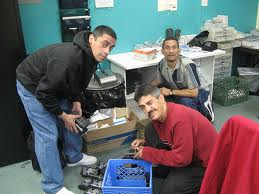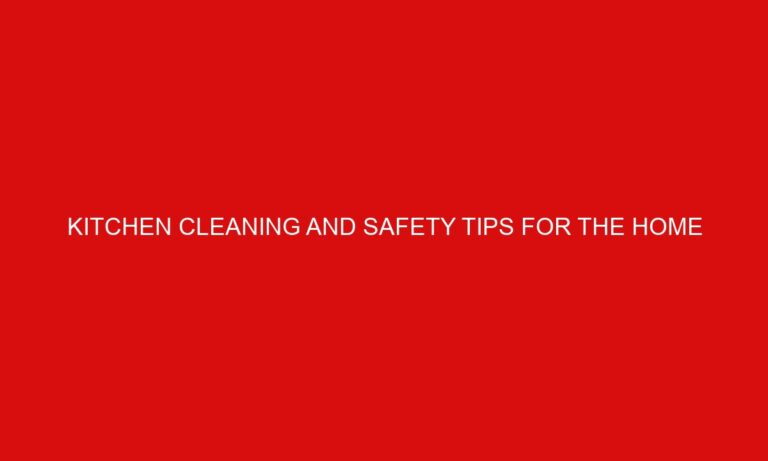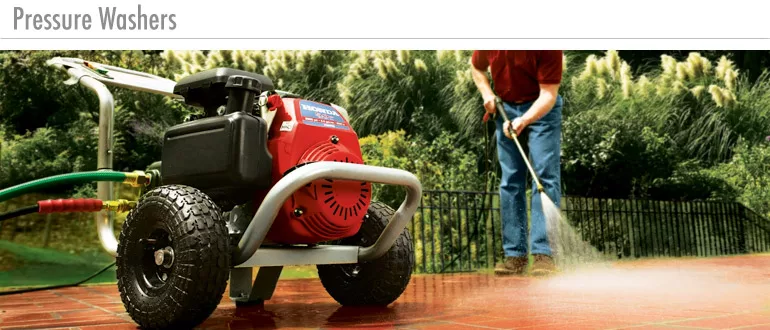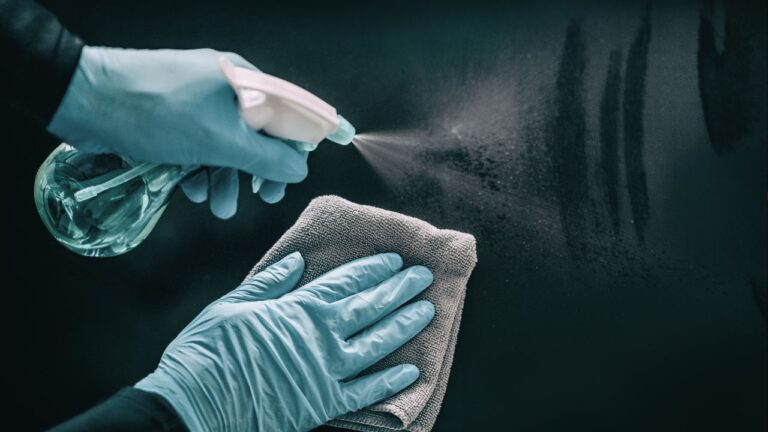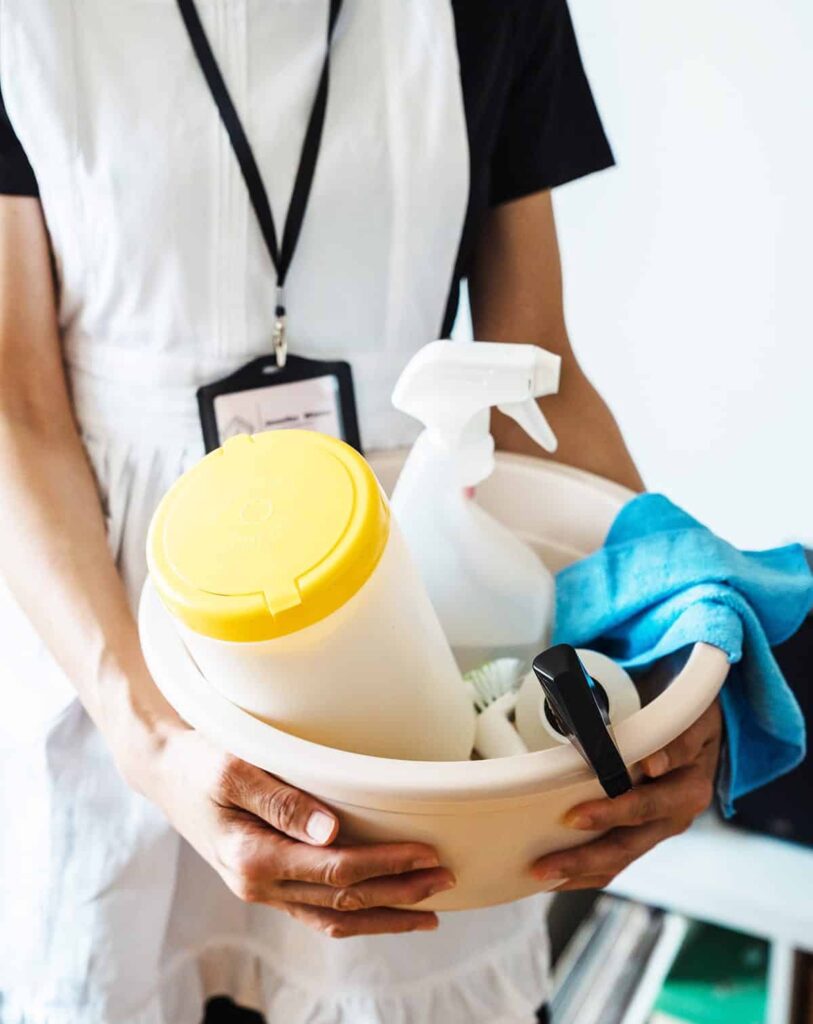Steps for Organizing a Neighborhood Cleanup Initiative
Steps for Organizing a Neighborhood Cleanup Initiative
Written by:
A neighborhood cleanup initiative creates a sense of community and brings people together. Not only does it serve a practical purpose, such as cleaning and revitalizing an area, but also, people often leave a neighborhood cleanup with a greater sense of unity, friendship, and purpose. It isn’t uncommon for cleanup participants to develop a new respect for one another and sense of pride in their community after a cleanup event. While organizing a neighborhood cleanup may seem like a daunting task at first, it doesn’t need to be overwhelming. With careful planning, goal – setting, and a focus on organization, anyone can set up a successful community cleanup initiative.
Setting Up the Basics
The most important steps in any cleanup initiative include organizational tasks, choosing a project coordinator and field supervisor, and setting a date for the event. The project coordinator is the main go-to person and will have the greatest responsibility. They will oversee subcommittees that must complete assigned tasks by a set point in time. The project coordinator must be someone who is well-liked, responsible, energetic, and able to enforce the schedule and motivate other people to complete their assigned tasks. Once the project coordinator is selected, the subcommittees can be established and they can work together to begin the planning stages.
In addition to the project coordinator, a field supervisor is often needed to monitor the activities directly before, during, and after the event. The field supervisor is in charge of ensuring that the cleanup area is free of any problem areas, and if they exist, the field supervisor will develop a plan that effectively deals with them. The field supervisor is often considered the second in command and plays a vital role during the day of the cleanup. The field supervisor often distributes tools, supplies, and refreshments during the cleanup and addresses any problems that may arise with the work crew.
It is a good idea to choose a date between one and two months from the first initial meeting and assigning of tasks for the actual cleanup. Many successful initiatives take place approximately four to six weeks from the first meeting. As each team or committee is comprised of community volunteers, it is critical that the project coordinator ensures that everyone is comfortable with their assigned tasks. If one team feels their responsibilities are too great or far surpass those of others, the cleanup will not result in a positive experience for all.
Publicize Your Event
Once the date has been set, a project coordinator and field supervisor have been selected and organizational subcommittees have been established, it’s time to publicize the event. Publicity is key to finding volunteers and ensuring that everyone is aware of the cleanup. There are several ways to publicize a neighborhood cleanup, but many find that printing flyers and distributing them through neighborhoods is the most effective. Flyers should be distributed in local stores, libraries, schools, and churches a week or two after the initial planning begins. This ensures that those who want to volunteer have ample time to prepare. A second set of flyers should be distributed the weekend before the scheduled cleanup. These flyers will serve as reminders for community members who are interested in participating in the cleanup. In addition to flyers, some use phone calls and social media networks to publicize neighborhood cleanup initiatives.
How to Find Volunteers
As a neighborhood or community cleanup initiative is comprised of volunteers, it is important to know how to find people willing to participate. Local community organizations are a great way to find people interested in helping. Churches, schools, community recreation centers, and libraries can help coordinators find people who will spread the word about the upcoming event. One of the best aspects of a neighborhood cleanup is that participants of all ages are welcome to join in: No one is too old or too young to help. Families often find that involving kids in a neighborhood cleanup is a wonderful way to teach children the importance of community and fosters a sense of working together. The project coordinator should not try to find volunteers, as they will have a full slate: Rather, the project coordinator should find a volunteer coordinator who can focus on finding participants.
Donated Supplies and Tools are Best
Ensuring that there are enough tools and supplies to complete the cleanup is critical to a successful event. Donated supplies are best, and a community’s commercial businesses are often willing to provide needed items. Trash bags, gloves, rakes, and shovels are just a few of the items often required for a neighborhood cleanup initiative. Tools and supplies may vary based upon the area to be cleaned and the project’s requirements.
Where to Put the Trash?
One of the most important aspects of a neighborhood cleanup is knowing where to put the trash after it has been collected. The project coordinator may arrange with the city for the collected garbage to be picked up and disposed of. Each project coordinator will need to contact their local solid waste management department to determine what paperwork must be filed in order to request additional trash service on the day of the event. If the municipality cannot pick up collected garbage, it may be necessary to go through a private waste company. It’s important to understand that there may be rules and regulations set in place regarding what type of waste will be collected and disposed of by a city or company. If the city or private company cannot help, the project coordinator may need to arrange with local volunteers to bring the trash to the city dump.
Have a Party
After the trash has been collected and disposed of and the volunteers have finished their hard work, it’s time to celebrate with a party. A party coordinator is in charge of overseeing the event and makes sure that all supplies are collected. The party coordinator will seek out a place to host the party and will oversee a team that will help with the party planning and its preparation. Other tasks involve being in charge of food and gathering utensils, tables, chairs, and other required items. Local businesses may donate goods, drinks, and other supplies. Inquire at your local recreation center, as they may let you host the party in a community room. Many residents who are unable to participate in the cleanup due to age or physical limitations often feel they may contribute by preparing and providing refreshments for the party.
There are many benefits to hosting a neighborhood cleanup. Many find the initiative so successful that they quickly set a date for a follow-up event.
- Community Cleanup Guide (PDF)
- Tips for Organizing a Successful Neighborhood Cleanup
- How to Organize a Graffiti Cleanup (PDF)
- Organizing a Neighborhood Cleanup: Yes We Can (PDF)
- How to Organize an Effective Cleanup
- Rustle the Leaf’s Neighborhood Cleanup (PDF)
- Conducting a Community Clean-Up, Fix-Up Campaign
Contact Us
Get a quote
Your satisfaction is our priority, and we’re here to assist. Reach out to Busy Bee effortlessly by contacting us. Whether you have questions, need a custom quote, or want to discuss your cleaning requirements, our friendly team is ready to respond promptly. Connecting with us is the first step towards a cleaner and more comfortable environment for your home or business.
Call us for a quote today!
Contact Us
Get a quote
Your satisfaction is our priority, and we’re here to assist. Reach out to Busy Bee effortlessly by contacting us. Whether you have questions, need a custom quote, or want to discuss your cleaning requirements, our friendly team is ready to respond promptly. Connecting with us is the first step towards a cleaner and more comfortable environment for your home or business.


